
Brigadier General Francis Marion, also known as the "Swamp Fox", was an American military officer, planter, and politician who served during the French and Indian War and the Revolutionary War. During the American Revolution, Marion supported the Patriot cause and enlisted in the Continental Army, fighting against British forces in the Southern theater of the American Revolutionary War from 1780 to 1781.
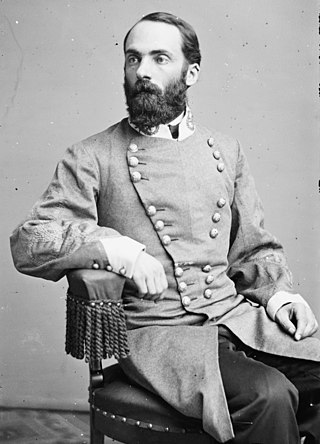
Joseph "Fighting Joe" Wheeler was a Confederate military commander and politician. He was a cavalry general in the Confederate States Army in the 1860s during the American Civil War, and then a general in the United States Army during both the Spanish-American and Philippine–American Wars near the turn of the twentieth century. For much of the Civil War, he was the senior cavalry general in the Army of Tennessee and fought in most of its battles in the Western Theater.
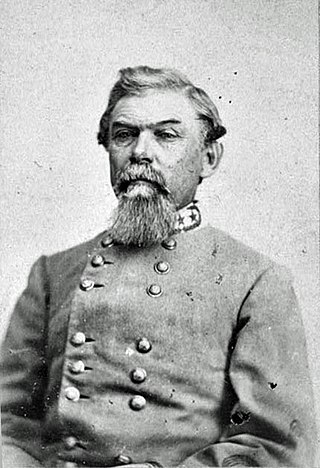
William Joseph Hardee was a career U.S. Army and Confederate States Army officer. For the U.S. Army, he served in the Second Seminole War and in the Mexican–American War, where he was captured and exchanged. In the American Civil War, he sided with the South and became a general. Hardee served in the Western Theater and quarreled sharply with two of his commanding officers, Braxton Bragg and John Bell Hood. He served in the Atlanta Campaign of 1864 and the Carolinas Campaign of 1865, where he surrendered with General Joseph E. Johnston to William Tecumseh Sherman in April. Hardee's writings about military tactics were widely used on both sides in the conflict.
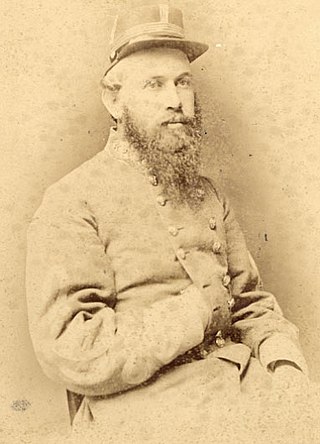
James Henry Lane was a university professor and Confederate general in the American Civil War.

Samuel Cooper was a career United States Army staff officer, serving during the Second Seminole War and the Mexican–American War. Although little-known today, Cooper was technically the highest-ranking general officer in the Confederate States Army throughout the American Civil War, even outranking Robert E. Lee. After the conflict, Cooper remained in Virginia as a farmer.

William Birney was an American professor, Union Army general during the American Civil War, attorney and author. An ardent abolitionist, he was noted for encouraging thousands of free black men to join the Union army.

Thomas Taylor Munford was an American farmer, iron, steel and mining company executive and Confederate colonel and acting brigadier general during the American Civil War.

Benjamin Franklin "Frank" Cheatham was a Tennessee planter, California gold miner, and a general in the Confederate States Army during the American Civil War. He served in the Army of Tennessee, inflicting many casualties on Gen. Sherman at Kennesaw Mountain, Georgia, but taking the blame for General Schofield's escape at Spring Hill, Tennessee – a major factor in the Confederate defeat at Franklin, Tennessee.

Bride's Hill, known also as Sunnybrook, is a historic house near Wheeler, Alabama. It is significant as an example of a Tidewater-type cottage built on a large slave plantation. It was added to the Alabama Register of Landmarks and Heritage on April 16, 1985, and to the National Register of Historic Places on July 9, 1986.
Military leadership in the American Civil War was vested in both the political and the military structures of the belligerent powers. The overall military leadership of the United States during the Civil War was ultimately vested in the President of the United States as constitutional commander-in-chief, and in the political heads of the military departments he appointed. Most of the major Union wartime commanders had, however, previous regular army experience. A smaller number of military leaders originated from the United States Volunteers. Some of them derived from nations other than the United States.

Charles Camp Doolittle was a store clerk, general in the Union Army during the American Civil War, and a bank cashier.

Zebulon York was a general in the Confederate States Army during the American Civil War. He was among a small group of Northern-born Confederate generals.
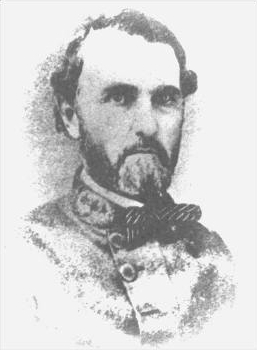
St. John Richardson Liddell was a prominent Louisiana planter who served as a general in the Confederate States Army during the American Civil War. He was an outspoken proponent of Southern emancipation of slaves. Following the war, Liddell had a prominent feud with a former Confederate officer, Charles Jones, who eventually murdered Liddell near his home in 1870.

Philip Dale Roddey was a brigadier general in the army of the Confederate States of America during the American Civil War.

Roseland Plantation is a historic plantation complex site in Faunsdale, Alabama. The site is situated on a low hill at the end of a long driveway on the overgrown estate. It was added to the National Register of Historic Places on January 20, 1994, as a part of the Plantation Houses of the Alabama Canebrake and Their Associated Outbuildings Multiple Property Submission.

Fairhope Plantation is a historic Carpenter Gothic plantation house and historic district, located one mile east of Uniontown, Alabama, US. The 2+1⁄2-story wood-framed main house was built in the Gothic Revival style in the late 1850s. The plantation historic district includes six other contributing buildings, in addition to the main house. It was added to the Alabama Register of Landmarks and Heritage on December 19, 1991, and subsequently to the National Register of Historic Places on May 29, 1992, due to its architectural and historical significance.
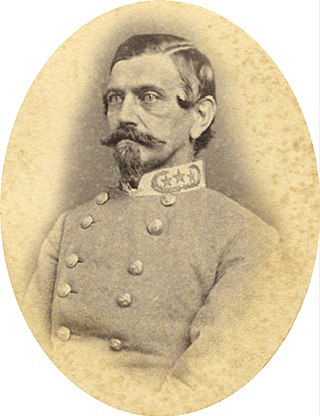
James Cantey was a Confederate States Army brigadier general during the American Civil War. He was a lawyer, slave owner, state legislator in South Carolina and officer in the Mexican–American War, and a slave owner in Alabama both before and after the war.
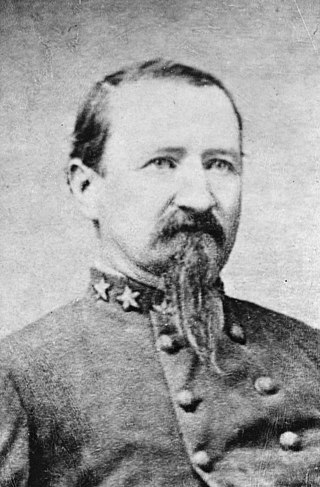
James Hagan was a United States Army captain during the Mexican–American War and a Confederate States Army colonel during the American Civil War. He was a prosperous businessman and planter at Mobile, Alabama between the wars.
Moses Wright Hannon was a Confederate States Army colonel during the American Civil War. In August 1864, he was assigned to duty as an acting brigadier general by General John Bell Hood, subject to appointment by Confederate President Jefferson Davis and confirmation by the Confederate Senate. Although Hannon commanded a brigade in the cavalry corps of the Army of Tennessee and in Major General Joseph Wheeler's cavalry corps from June 1864 until the end of the war, he never was officially appointed by Jefferson Davis and confirmed by the Confederate Senate to brigadier general rank.

The Thomas Holland House was a historic residence near Hillsboro, Alabama. The house was built around 1836 by Thomas Holland, a South Carolinian who had come to Lawrence County, Alabama, in 1823. Holland began his plantation with 40 acres and built it to over 2100 acres by 1849. The house was a full two-story dogtrot house constructed of logs, one of the only of its type in Alabama. The exterior had since been covered in clapboard, and the breezeway had been finished with vertical boards and a chair rail. Enclosed stairways in each lower room gave access to the upper floor; the central room over the dogtrot was only accessible from the eastern room. The house was listed on the Alabama Register of Landmarks and Heritage and the National Register of Historic Places in 1991.




















